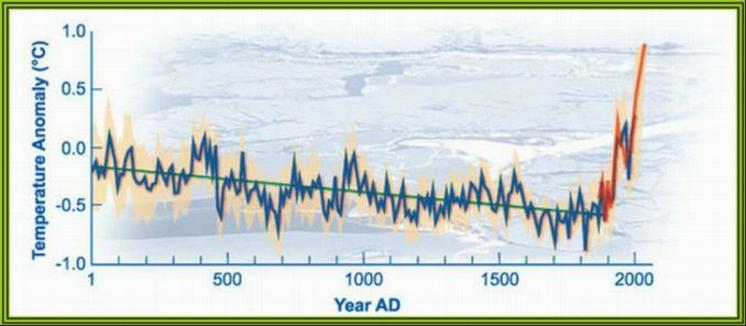Joplin, Missouri after the tornado that hit on May 22
Joplin, Mo., was prepared. The tornado warning system gave residents 24 minutes’ notice that a twister was bearing down on them. Doctors and nurses at St. John’s Regional Medical Center, who had practiced tornado drills for years, moved fast, getting patients away from windows, closing blinds, and activating emergency generators. And yet more than 130 people died in Joplin, including four people at St. John’s, where the tornado sucked up the roof and left the building in ruins, like much of the shattered city.
Even those who deny the existence of global climate change are having trouble dismissing the evidence of the last year. In the U.S. alone, nearly 1,000 tornadoes have ripped across the heartland, killing more than 500 people and inflicting $9 billion in damage. The Midwest suffered the wettest April in 116 years, forcing the Mississippi to flood thousands of square miles, even as drought-plagued Texas suffered the driest month in a century. Worldwide, the litany of weather’s extremes has reached biblical proportions. The 2010 heat wave in Russia killed an estimated 15,000 people. Floods in Australia and Pakistan killed 2,000 and left large swaths of each country under water. A months-long drought in China has devastated millions of acres of farmland. And the temperature keeps rising: 2010 was the hottest year on earth since weather records began.
From these and other extreme-weather events, one lesson is sinking in with terrifying certainty. The stable climate of the last 12,000 years is gone. Which means you haven’t seen anything yet. And we are not prepared.
Picture California a few decades from now, a place so hot and arid the state’s trademark orange and lemon trees have been replaced with olive trees that can handle the new climate. Alternating floods and droughts have made it impossible for the reservoirs to capture enough drinking water. The picturesque Highway 1, sections of which are already periodically being washed out by storm surges and mudslides, will have to be rerouted inland, possibly through a mountain. These aren’t scenes from another deadly-weather thriller like The Day After Tomorrow. They’re all changes that California officials believe they need to brace for within the next decade or two. And they aren’t alone. Across the U.S., it’s just beginning to dawn on civic leaders that they’ll need to help their communities brave coming dangers brought by climate change, from disappearing islands in Chesapeake Bay to dust bowls in the Plains and horrific hurricanes in the Gulf of Mexico. Yet only 14 states are even planning, let alone implementing, climate-change adaptation plans, says Terri Cruce, a climate consultant in California. The other 36 apparently are hoping for a miracle.
The game of catch-up will have to happen quickly because so much time was lost to inaction. “The Bush administration was a disaster, but the Obama administration has accomplished next to nothing either, in part because a significant part of the Democratic Party is inclined to balk on this issue as well,” says economist Jeffrey Sachs, head of the Earth Institute at Columbia University. “We [are] past the tipping point.” The idea of adapting to climate change was once a taboo subject. Scientists and activists feared that focusing on coping would diminish efforts to reduce carbon emissions. On the opposite side of the divide, climate-change deniers argued that since global warming is a “hoax,” there was no need to figure out how to adapt. “Climate-change adaptation was a nonstarter,” says Vicki Arroyo, executive director of the Georgetown Climate Center. “If you wanted to talk about that, you would have had to talk about climate change itself, which the Bush administration didn’t want to do.” In fact, President Bush killed what author Mark Hertsgaard in his 2011 book, Hot, calls “a key adaptation tool,” the National Climate Assessment, an analysis of the vulnerabilities in regions of the U.S. and ideas for coping with them. The legacy of that: state efforts are spotty and local action is practically nonexistent. “There are no true adaptation experts in the federal government, let alone states or cities,” says Arroyo. “They’ve just been commandeered from other departments.”
The Rest Of The Story


No comments:
Post a Comment